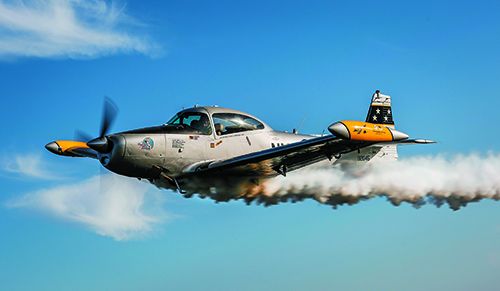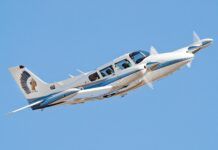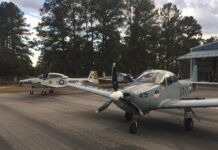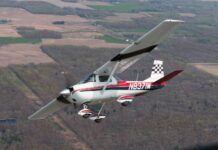Let’s clear up any misconceptions. While the North American Navion (pronounced “navy-on”) came from the same company that built the P-51, it’s no Mustang. It doesn’t have a roaring Merlin engine, doesn’t come close to hauling along at 400-plus MPH and won’t be valued north of one million bucks.
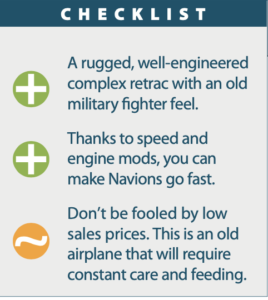
The Navion is a well-built utility airplane with gentleman-like flying characteristics, and a fine choice for the buyer looking to dip a toe into world of classic aircraft. Done correctly, Navion ownership won’t be cheap and ones that are at or below suggested retail pricing will likely need some work. Aircraft Bluebook suggests that a late-model 1976 Rangemaster sells for around $63,000. But a lot of these might be project airplanes in various stages of restoration, lightly modded or in desperate need of a full-up restore. That could mean shelling out over twice its selling price in refurbishment and desirable mods.
You could also look for one that’s been loved, and you’ll pay for it. Here’s a fresh look at the Navion market, with some commentary from the pros who work with them.
MODEL HISTORY
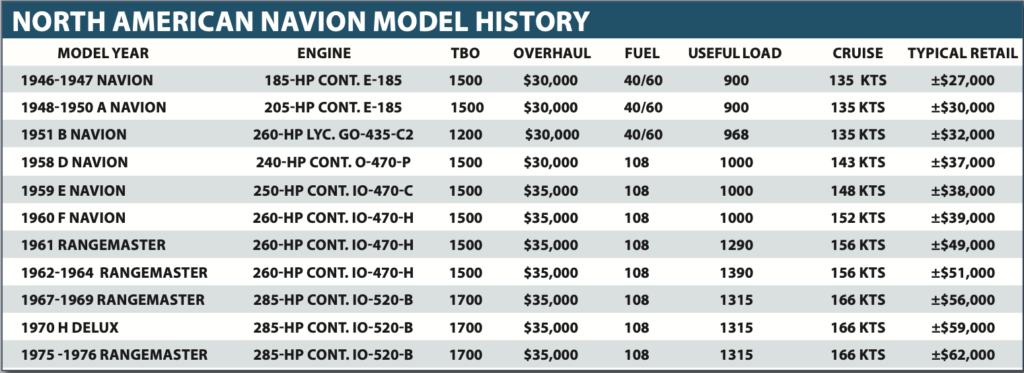
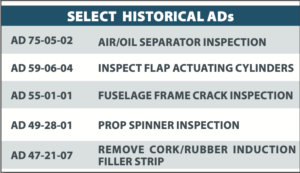
Although not many were made starting around 1946 (about 2700 total), the Navion lasted all the way to 1976, having been manufactured by different companies in various models and incarnations. It had good looks and rugged build quality but while it looked fast standing still, it couldn’t come close to keeping up with a 175-MPH V-tail Bonanza. Best you could chi-chi from a stock Navion was around 140 MPH. These days that problem is solved by serious engine, prop and airframe mods.
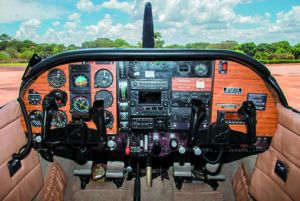
The Navion was originally intended for military duty, which is why the airplane is built so well. But while North American hoped to sell thousands to military, it didn’t sell close to that. The good news is the sales included spares, which means, in general, parts for the small Navion fleet aren’t a real problem. Still, maintaining a Navion won’t be like that of a Cessna. Like most old airplanes, you might have to work to find certain parts.
The first Navion had a Continental 185-HP engine with a takeoff rating of 205 HP. After building 1100 of these airplanes, North American sold its rights in 1948 to Ryan of San Diego, the same Ryan that built the Spirit of St. Louis for Charles Lindbergh. Ryan dubbed its Navion the A model and built another 1200 before ceasing production three years later. Some of the later Ryan models had a 225-HP Continental E-225. The last B model, which used a 260-HP geared Lycoming GO-435 engine, was the last model of the original genuine Navion.
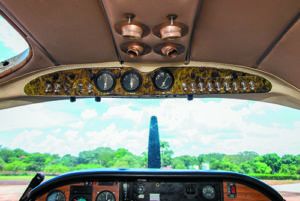
But that wasn’t the end of the Navion. It remained out of production until 1955, when rights were sold to Tubular Steel Corporation (TUSCO), which specialized in rebuilding and updating old Navions with Continental IO-470 engines of 240, 250 and 260 HP. These are known as the D, E and F models, respectively. TUSCO resumed production in 1958 and introduced some refinements. The sliding canopy was replaced with a door, fuel capacity was greatly increased and a 260-HP Continental was added. Thus was born the so-called Rangemaster G model, but production was short- lived. About 50 were built before hurricane Carla wiped out the factory in 1961.
Still, the Navion endured, thanks to the American Navion Society. Some of its members bought the Navion rights and in 1967, they began building a handful of Rangemaster H models, which had a 285-HP Continental IO-520 engine. But that company folded, too. Twice in the mid-1970s there were attempts to revive the Rangemaster. Only a half-dozen or so airplanes were built.
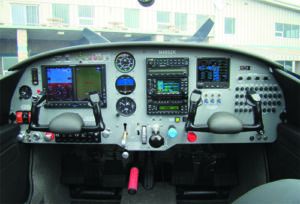
Today, the type certificate and manufacturing jigs are owned by Sierra Hotel Aero, which provides service and parts.
There are also a number of well-regarded mod shops that support the Navion and like a handful of other models, the type has an excellent owner organization in the American Navion Society. Reach it at www.navionsociety.org. There’s also Southern Navion Air Group at www.goflyyournavion.com. We also found the Navion forum at www.navioninfo.com, but it didn’t seem very active (posts were at least six months old) at press time in May 2020. Still, between Sierra Hotel Aero, the American Navion Society and specialty shops like Navion Customs, the airplane is surprisingly well supported despite its age.
PERFORMANCE
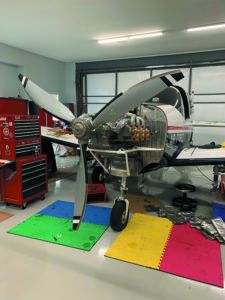
For the prospective buyer, the Navion immediately distinguishes itself in one respect: It ranks as one of the lower-cost retractables on the pre-owned market, according to the Aircraft Bluebook. A late-model Rangemaster H has a typical retail price of $63,000. A 1960 F model is listed at $39,000. But for certain, pristine models with lots of mods rightfully sell for a lot more. But no matter the price or condition, a potential buyer should go into the deal with eyes open. An older Navion may need a lot of work. The support is there, but you’ll still need to pay for it.
With an estimated 500 actively flying, Navions may be hard to find. During our research in spring 2020, we only found a handful for sale in the U.S. Some were North American models, some Ryan and a TUSCO or two. Serious buyer? We say the first step is to join up with the Navion Society, and other online groups, before even considering a purchase.
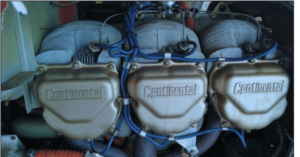
You’ll learn a lot about ways to make the airplane better. To make up for its lackluster performance, many owners have modified and rebuilt their airplanes to a degree matched by few other models. It’s safe to say that most of the airplanes have been modified and you’ll need help from an expert to sort out what’s been done. Some will be light on paperwork and others will have impeccable records. The latter deserves a price premium. Ones without a lot of mods are candidates for performance mods, if you have a need for speed. And who wouldn’t want to go faster? If you don’t, the Navion can be economical, while still going fast enough.
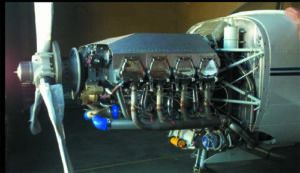
Early 205-HP Navions cruise at about 140 MPH on 11 GPH. The 225-HP versions add about 5 MPH to that number in exchange for a gallon more of fuel burn.
You’ll go about 155 MPH or so in the 240-, 250- and 260-HP second-generation D, E and F Navions.
In contrast, the 1951 B model, with the geared 260-HP Lycoming, ranks as the most inefficient Navion built: It can manage only about 153 MPH on 13.1 GPH. Other low-priced used retractables such as the Comanche 180 and early Mooneys fly faster and use less fuel, but they’re also more expensive and lack the Navion’s expansive cabin comfort.
We’re told that a 1961 model G Rangemaster powered by a TCM 260-HP IO-470-H engine with GAMIjectors has typical lean-of-peak true airspeeds in the 155 to 158 MPH range on around 11.5 GPH.
Takeoff performance varies by engine installation, of course, but this is generally one of the Navion’s selling points. According to early sales claims, the A model had a takeoff ground run of only 560 feet while Rangemasters hop off the pavement in 425 feet. However, so many airplanes have been upgraded with larger engines—all the way up to a Continental IO-550—that performance is all over the map. “The fat wing will still get off the ground in 600 to 1000 feet, depending upon engine, and cruise at 125 to 165 knots, again, depending on engine,” writes owner Case Ketting. In any case, the Navion is better than average at short-field work and will get into short runways comfortably.
PAYLOAD, CABIN EXPERIENCE
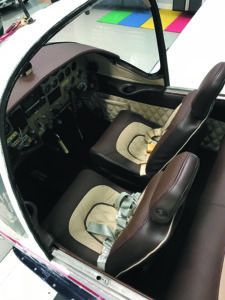
Fuel capacity differs widely from one Navion to another, so it takes effort to pin down actual payload numbers. Although the basic fuel system has 40 gallons, many Navions have an extra 20-gallon tank under the rear seat or in the baggage compartment. Also, there are several different types of tip tanks available, which some owners say can yield a range of 1000 miles.
Late-model Rangemasters had fuel capacities of up to 108 gallons, although that much fuel would limit payload. Generally, expect still-air range of about 600 miles in an older Navion with 60-gallon tanks. This will be reduced somewhat as extra passengers and baggage are added.
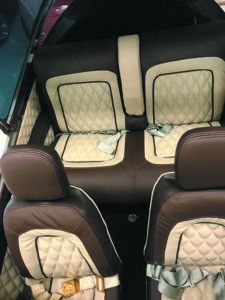
Despite its beefy construction, the Navion weighs 1900 to 2000 pounds empty with a gross weight of either 2750 or 2850 pounds, giving it a useful load of around 800 pounds. The gross weight on the G Rangemasters can be as much as 3315 pounds. At the lower weights, with four people and 100 pounds of baggage, there isn’t a lot of room for fuel. The 260-HP version has a useful load just a little better than the A model’s. Unfortunately, it burns 20 percent more fuel, so on the same trip, the load would even be more limited.
More practical for longer trips are the re-engined D, E and F models, which have increased gross weights. For the typical 260-HP Rangemaster, the useful load is about 1200 pounds. This provides for decent range with four passengers and 100 pounds of luggage. Although not recommended, thanks to its fat wing, owners tell us the Rangemaster will take off and climb with about anything you can stuff into it.
And that turns out to be a lot. By any standards, the airplane is quite large, with an enormous cabin whose seating style is best described as regal. Once inside, passengers will be more comfortable than they would be in a Mooney or a Bonanza and with a better view. The rear seat is straight out of a 1950s sedan, a broad bench that will fit three people in acceptable comfort.
“The Navion’s spacious cabin allows passengers to move (carefully) from front to rear seats in flight. Try that in a Mooney!” writes owner John Leggatt. Up front, the panel is big and broad with good visibility forward and sideways, with a smattering of instruments and switches on the canopy overhead. Soundproofing wasn’t a priority in the 1940s, so unless owners have done their own soundproofing mods, the cabins tend to be noisy—even with good headsets.
MAINTENANCE ITEMS
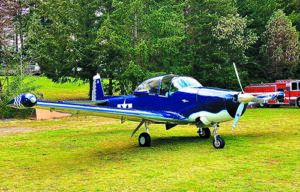
We highly recommend buyers new to the Navion find a shop familiar with the airplane to do a thorough prebuy evaluation. Although cheap to purchase, a poorly maintained example can easily offset any initial cost-of-entry advantage. Here are some hotspots to pay attention to.
Landing gear: These are hydraulic systems, with the usual headaches with retrac links, hoses and pumps. Some older airplanes may still have the original single-piston hydraulic pumps, which should be replaced with new versions. Check for loose trunnions in the gear pivots and for play in the nosegear, causing shimmy.
Corrosion: Like other military airplanes, Navions built by North American were lavishly zinc chromated. But Ryan cut back on chromating and that may allow some corrosion to creep in. “Remove the seats, side upholstery panels and wing root fairings,” wrote one owner, “and check for corrosion where the fuselage mounts to the top of the wing.”
Cooling: Although most examples have probably been cured of this, early Navions had inefficient updraft cooling. The B model with the 260-HP Lycoming has oil temperature problems easily cured with a larger aluminum oil cooler.
Propeller: The old Hartzell diaphragm-type props used on original Navions will leak. They must be replaced and adjusted regularly, if parts are available, or the prop replaced with an STC’d upgrade. (Hartzell and McCauley offer upgrades, but not for all engines.) There’s also an STC for the monstrous MT composite scimitar for big-engined Navions.
Continental E-225: Later Ryan models had these engines, which have a reputation for being somewhat temperamental, tend to leak oil and are relatively expensive to overhaul. Owners and shops we talked with recommend upgrades instead.
Fuel tanks: The Navion was built a lot like the P-51 where the two wings were bolted together and then bolted to the fuselage. The wings house aluminum fuel tanks, coupled by rubber hoses. And of course those hoses get dry and ultimately crack. We’re told the only real way to get the tanks out is by pulling the wings off the airplane and separating the wings from each other. Sound like a big job? You can bet it is. Navion pros suggest finding an airplane that’s had this so-called wing de-mate in the last 25 or so years. It can be a $10,000 job.
Damage and paperwork: We’re told almost every Navion has been on its belly at one point or another, but a gear-up landing typically doesn’t always do substantial damage other than taking out the flaps and the prop. And of course as with many old airplanes, paperwork might be light and missing some maintenance entries. We suggest having the airplane weighed after major upgrades, or even if it hasn’t been weighed in the past few years. You can tell a lot about the care of the airplane by its paperwork.
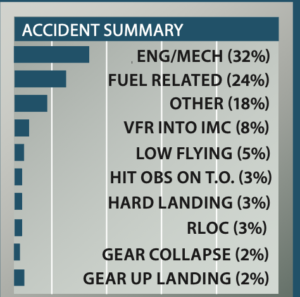
Over many years of reviewing the 100 most recent accidents for the Used Aircraft Guide, we’ve only occasionally found red flag issues. After looking at the last 100 Navion accidents we came away concerned about the fuel system generally and the fuel selector valve and gascolator in particular.
We counted at least 13 power loss or engine stoppage accidents in which failure to maintain the gascolator or fuel selector valve resulted in leaks. Once the engine was started, the leak became a route for air to get into the fuel line in sufficient quantity to cause a power loss or engine stoppage.
What was scary to us was that in nearly half the cases, the owner/pilot knew of the leak and didn’t have it fixed, even when there was a service bulletin that addressed the specific problem. One owner even had to run the electric boost pump to keep the engine running when operating at low power—something that he’d been doing for some time rather than have the existing leak fixed.
The fuel selector valve played a role in nine accidents in which the pilot either didn’t change tanks after running a tank dry, got confused about which end of the selector handle pointed at the desired tank, pointed it between tanks or inadvertently selected the “off” position. One owner disassembled and reassembled his fuel selector valve and put the handle on backward. You guessed it—he knew it, but flew the airplane anyway and still managed to point the handle the wrong way.
We recommend that anyone looking to purchase a Navion make sure that the fuel system is inspected carefully with special attention to evidence of leaks. We also recommend a careful checkout on the fuel selector.
An owner spent 10 years restoring his Navion. He then hired a technician to perform an annual. The tech refused to sign off the airplane. No problem, the owner flew it anyway. After the crash, the fuel selector and gascolator were found full of a brown liquid contamination.
On the positive side of the equation, we were impressed to see only three runway loss of control (RLOC) accidents—a stunningly low number that is evidence of excellent handling characteristics of the breed.
We’ve long been impressed by the Navion’s landing gear. It’s tough and it seems to work reliably. We found only one event in which the gear wouldn’t extend and two gear collapse incidents.
The willingness to fly with known maintenance issues caused us to wonder about those who own Navions when it comes to good aeronautical judgment. Eight VFR into IMC fatal accidents as well as five low flying crashes—one involving an intoxicated pilot buzzing a family backyard barbecue, leaving part of a wing in a tree adjacent to the grill itself and then rolling into power lines and the ground—didn’t improve our outlook.
We were particularly troubled by the report of a pilot and his friend drinking heavily at their favorite bar and overheard talking about “crazy aerobatics,” who left to go fly the pilot’s Navion. The radar track showed major speed, direction and altitude changes before the airplane broke up inflight.
MODS AND HOT RODS
To learn about the current Navion market we talked with Navion Customs in Chino, California. This shop has been working with Navions for over 20 years and reports a steady flow of them coming through its doors for repair, mods and engine swaps. It’s been flying a Navion in the experimental category with a Lycoming TSIO-720 eight-cylinder turbocharged engine bolted on. But for a more realistic upgrade that’s FAA certified, company principal Ryan Douthitt (who grew up around the Navion) told us the 285-HP type-certified Continental IO-520 is a worthy and popular choice of engine upgrades for older models, especially ones with the E-225, although he told us the shop can generally make them run well, too. A properly tuned small engine can make a Navion do a respectable 140 knots and bigger ones, plus plenty of speed mods, make 175 knots a reality.
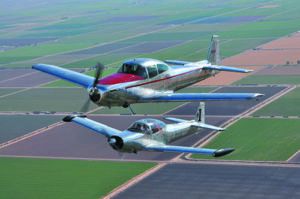
Navion Customs owns the STC for the big 300-HP IO-550B and is working on an STC (some have been installed with a field approval) for the 310-HP top-inducted Continental IO-55OR, an engine that’s done well on the Cirrus SR22. It requires a cowling change to a two-piece cowling and you’ll likely have to change the mount. The prop being used in the STC is a three-blade composite MT propeller.
Douthitt knows the Navion well enough to attest the heavy airframe really needs extra horsepower over stock to deliver the climb and cruise performance that the typical owner wants. The IO-520 is a lot of bang for the buck and has a straightforward install.
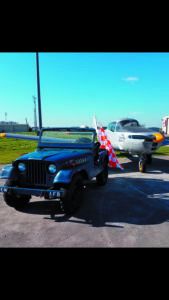
With the extra horses in place, you can tweak some more speed by cleaning up the airframe with gap seals, narrower landing gear, fairing mods and tire mods, to name a few.
But before buying any speed mods we think the first step should be to properly rig the airframe and flight controls and inspect and replace hardware. A lot of these airplanes have been patched up over time with abandoned antennas, plus we’ve seen some hacked-up autopilot installations that made the airplane unsafe at any speed.
Like many old airplanes, annual inspections can either be easy or labor intensive, and we think having a shop with extensive Navion experience is the absolute best way to maintain one. We’re told that typical annuals (ones that are done correctly) could run $4000, while others might be less or a lot more. It really depends on how the airplane has been maintained. Fuel tank work can require removing the wings, for example.
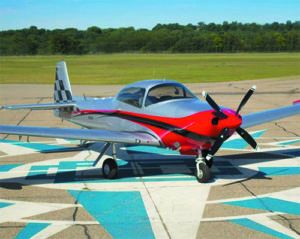
Navion Customs also does avionics work and panel upgrades, and has done a fair amount of ADS-B upgrades, of course. And panel replacement is part of the bigger picture of simply getting rid of the old and making an already good airplane better with modern systems, while getting rid of old and tired wiring and antennas. Some Navions have been worked over so extensively that some ramp gawkers might not even recognize them as a Navion, especially decked out in a new paint scheme and a bunch of big-screen glass on the panel.
As Douthitt put it, “You really have a blank canvas because there’s so much that you can do to these airplanes.”
That includes extended-range fuel tanks. J.L. Osborne (www.jlosborne.com), which is part of GAMI, has the 20-gallon wing tip tank mod for the Navion. The tank is all aluminum and has recessed LED strobe and nav lights, a flush filler neck and a concealed drain. The tanks can improve lift, increase gross weight (250 pounds) and some report a few knots’ increase in cruise speed. Osborne suggests that typical installations could take around 25 hours.
D’Shannon (www.d-shannon-aviation.com) has a PMA’d stainless steel exhaust system, plus aileron and flap gap seals.
Another respected source for mods, refurbishment work, avionics upgrades and anything related to Navion support is type certificate holder Sierra Hotel Aero (www.navion.com) located in St. Paul, Minnesota. Its website shows off some impressive Navion modernization projects. It, like the American Navion Society, is a good source for locating service parts—from instrument panels to fuel system components—and technical data, including service letters and bulletins.
Shopping the market? Realistically you’ll pay $150,000 or more for one that’s well kept, has modern avionics, nice paint and interior and has speed mods. A major engine and prop upgrade could come close to $90,000.
FEEDBACK
As vice president of the American Navion Society I am very active in the type club, and as an A&P mechanic I also maintain several Navions. I am very fortunate to have earned my private pilot’s license in my dad’s Navion H Rangemaster in 1974. I have owned and flown my Navion for 18 years and have traveled all across the country in this Navion. Also, I commute an hour each way a couple of times each week in my Navion and am now flying around 250 to 300 hours a year. My family currently owns a combined five Navions.
Each Navion is unique due to modifications made over the years so no two are identical. Horsepower can range from 185 up to 310 and there is even one modified with a turbine engine. There are numerous approved modifications that improve visibility, reduce drag and extend range. These modifications have little effect on handling. Stall characteristics remain very docile, and the Navion will not spin but will instead enter a spiral that is easily recoverable. Low-speed handling is excellent with no tendency to ever drop a wing and roll control through the stall.
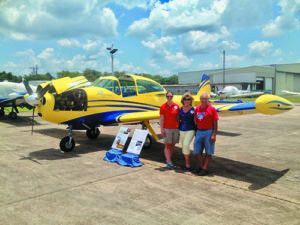
I have flown a couple of dozen different Navions and my personal Navion over 4000 hours. When I bought this Navion she had a tired E-225 engine and looked sad, but flew well and like most Navions was still a very solid airplane. During the last 18 years I have upgraded the engine three times, first from an E-225 to a 285-HP IO-520B then to a 300-HP IO-550B and finally to a 310-HP IO-550R. Each successive engine change has resulted in improved performance and efficiency.
Lightly loaded my Navion can take off in less than 200 feet and fly out of ground effect immediately with no headwind. Initial rate of climb is 1800 feet per minute, and it will hold 1000 feet per minute through 10,000 feet. Service ceiling is in the flight levels and it will cruise 150 knots true airspeed at 17,500 feet on 9.5 gallons per hour.
My normal cruise altitude is between 7000 and 9000 feet where my Navion will cruise 155 knots on 10.5-11.5 gallons per hour lean of peak or 165 knots on 16.5 to 17 gallons per hour.
Due to very large flaps and excellent low-speed handling an experienced Navion pilot can land in around 500 feet. Very steep descents are possible when the landing gear and full flaps are deployed with no tendency to build airspeed. In clean configuration glide is very respectable.
The Navion is a joy to fly. Rotate at 60 MPH indicated and fly off by 70 then pitch for 80 MPH while the gear retracts. This practice will result in a steep initial climb with a big engine and much less so with less power. Landing is simple, half flaps and 90 MPH on final is the easiest method to make a smooth landing. For short landings 70 to 75 MPH on final will work fine depending on current load and CG location.
The Navion has a large elevator that can hold the nose up through the stall resulting in the airplane settling in a flat attitude. Adding power or reducing back pressure on the yoke will immediately recover the airplane. Flaring and stalling too high on landing is a practice to be avoided as is touching down in a crab during a crosswind.
I recommend getting instruction from an experienced Navion pilot before venturing out on your own. The American Navion Society has a list of experienced Navion pilots who are willing to give demonstration rides and help prospective and new owners.
Maintenance is not a problem unless you buy a Navion that has been neglected for too long and use a shop that is unfamiliar with the type. An owner can spend a lot of money getting any neglected airplane into good condition. Once in good condition annual maintenance costs for your Navion should be less than the average high-performance complex airplane.
There are no expensive electric motors for the landing gear or flaps, only inexpensive O-rings and the occasional hydraulic hose, and there are no corrosion-prone magnesium control surfaces.
I’m available for demonstration rides and generally have five to seven Navions available at any one time.
Russell (Rusty) Herrington – Vice President – American Navion Society

